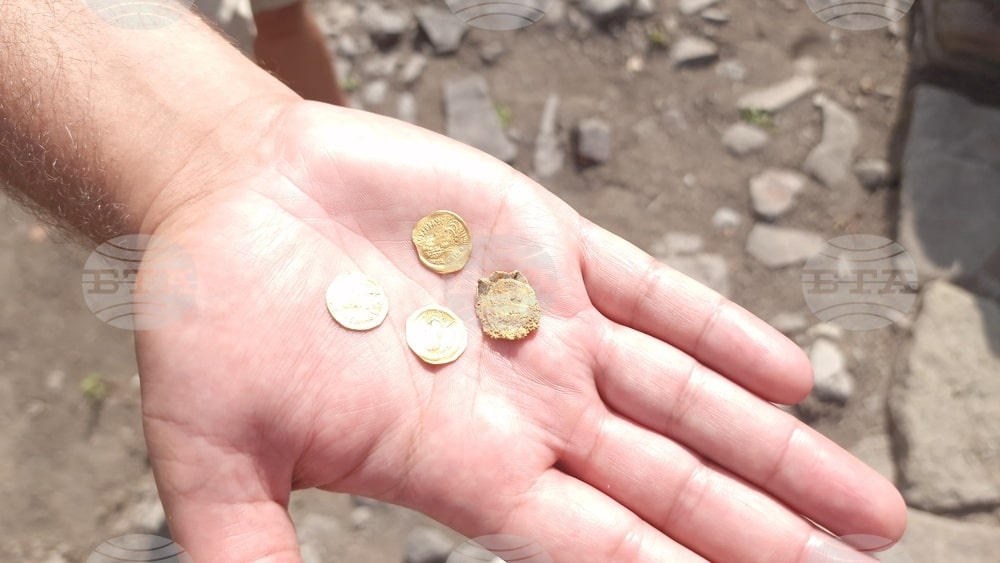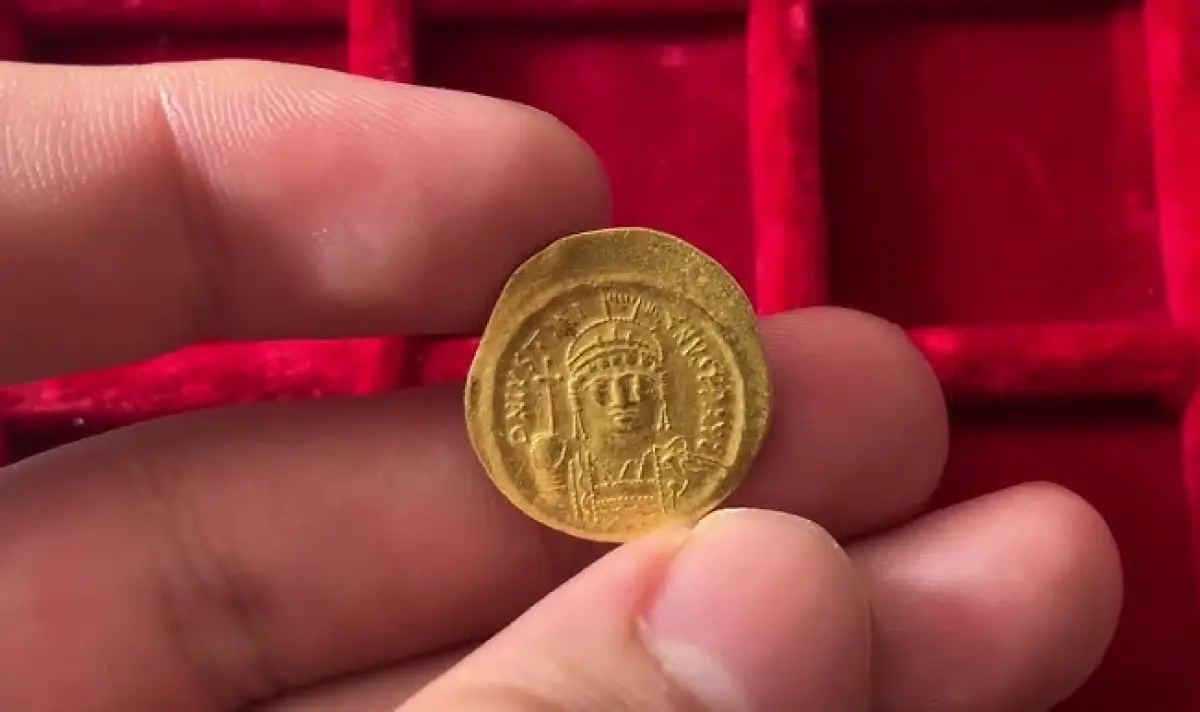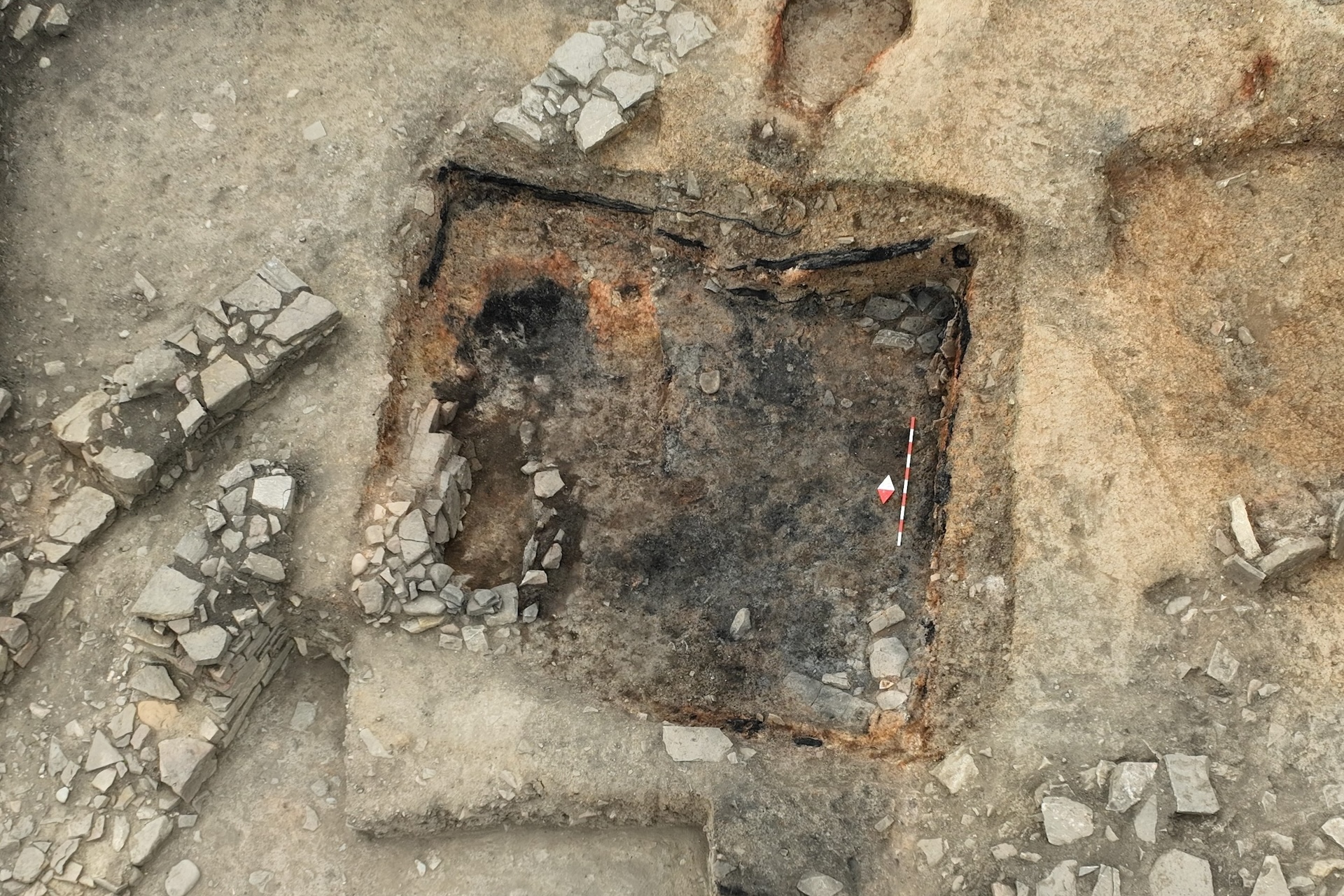On the floor of the 10th century house lay gold coins from the 6th century
Categories: Minting - Numismatics , Nálezy nejenom s detektorem kovů ve východní Evropě
Gold coins of the East Roman emperor Justinian I the Great were discovered during the excavation of a medieval house in the village of Debnevo in northern Bulgaria. The coins were apparently discovered by early medieval builders in the ruins of the Byzantine house on which they built the new house.
During the archaeological excavations in August, five gold coins from the 6th century were discovered on the floor of a burnt-out 10th-century house. They were probably kept by the owners of the newer house as a souvenir or heirloom from an earlier period. In addition to the coins, iron tools were discovered, including two sickles and two axes, as well as a belt buckle, ceramic vessels and three bronze rings.
"The dwelling was built on the remains of an early Byzantine building," expedition leader Stiliyan Ivanov, an archaeologist at the National Archaeological Institute of the Bulgarian Academy of Sciences, told Live Science. "We assume that the coins were originally found during the construction of the early medieval dwelling. Our working hypothesis is that the owners kept the coins because of the value of the gold," he added.
The small gold coins are of the tremissis type, worth one-third of a solidus. The obverse depicts the emperor with a pearl diadem, while the reverse personifies victory with a wreath in the right hand, a cross and a globe in the left. The inscription on the obverse reads "Our Lord Justinian the Eternal Augustus", a reference to the first Roman emperor who introduced the title Augustus (noble). The reverse side then bears the inscription "Victory of the Augustuses". Two of the coins are glued together, probably as a result of a house fire.
During the reign of Justinian I the Great, after the fall of the Western Roman Empire, the Byzantine Empire reached its greatest prosperity. The emperor issued a series of new Roman laws and was behind the development of new artistic and architectural styles. One of Justinian's goals was to restore the influence of the Roman Empire, which he sought to achieve by regaining control of the Western European and North African provinces. Justinian contributed significantly to the transformation of ancient Roman society into a medieval Byzantine society.
Excavations of the village, along with a nearby early fifth-century fortress, have been ongoing continuously since 2019. In addition to Byzantine artefacts and gold coins, archaeologists have also found the remains of a large settlement from the fourth to third centuries BC, as well as traces of structures from the early Stone Age.
Roman Němec
Sources: thehistoryblog.com, livescience.com
- On the coins of Flavius Petrus Sabbatius Justinianus in LH: Flavius Petrus Sabbatius Justinianus
- You can see the coin finds by metal detectorists in LH: Coins
- You can see the finds of artifacts from the Roman period in LH: Roman period
- You can see artefact finds from the Migration of Nations in LH: Migration of Nations
 Gold coins from the village of Debnevo in Bulgaria
Gold coins from the village of Debnevo in Bulgaria
 Gold coins of Justinian the Great
Gold coins of Justinian the Great
 gold coin from the period of Justinian I.
gold coin from the period of Justinian I.
 A view of the house from above
A view of the house from above
The article is included in categories: